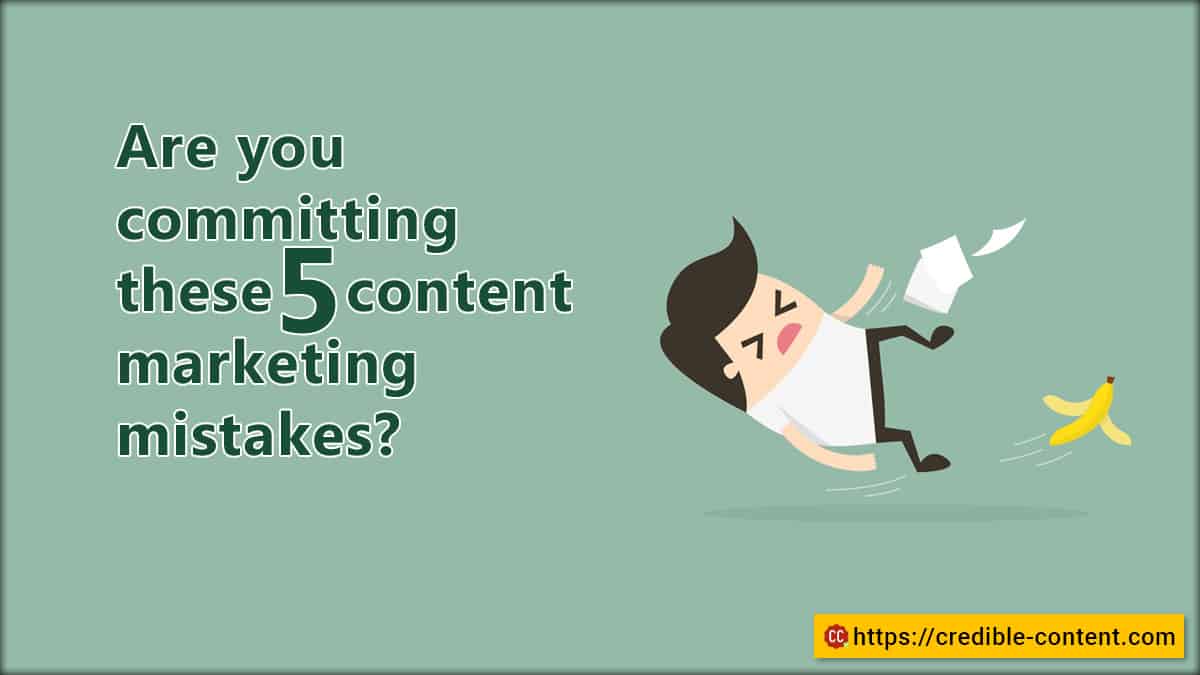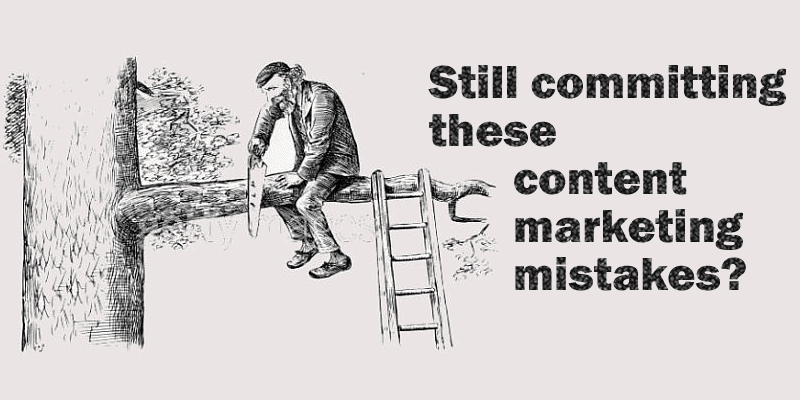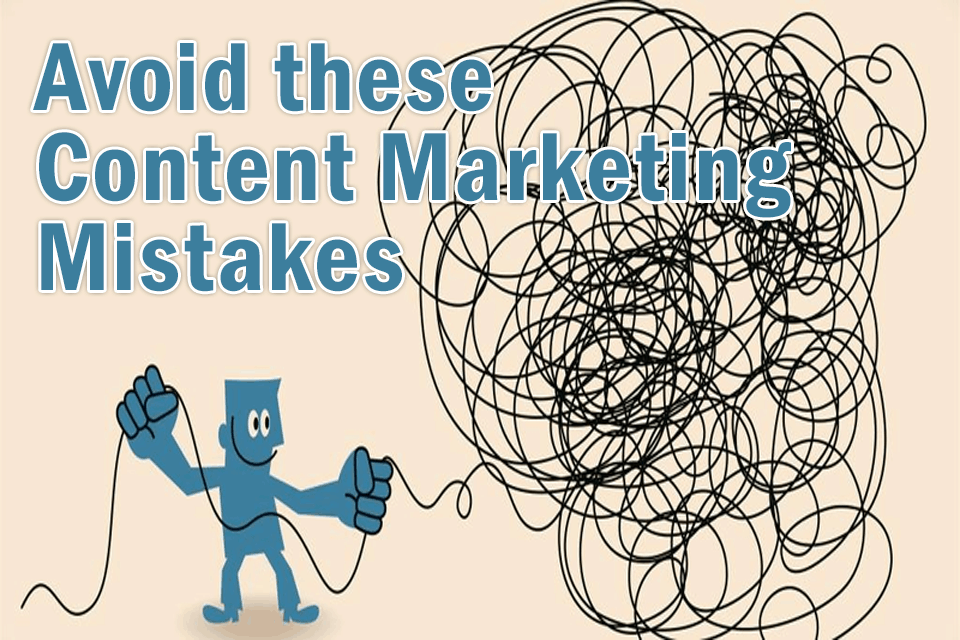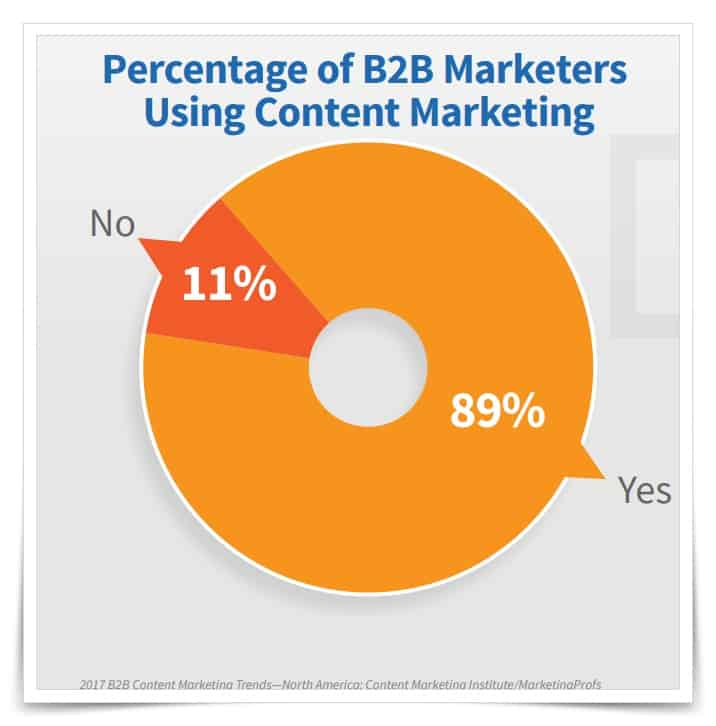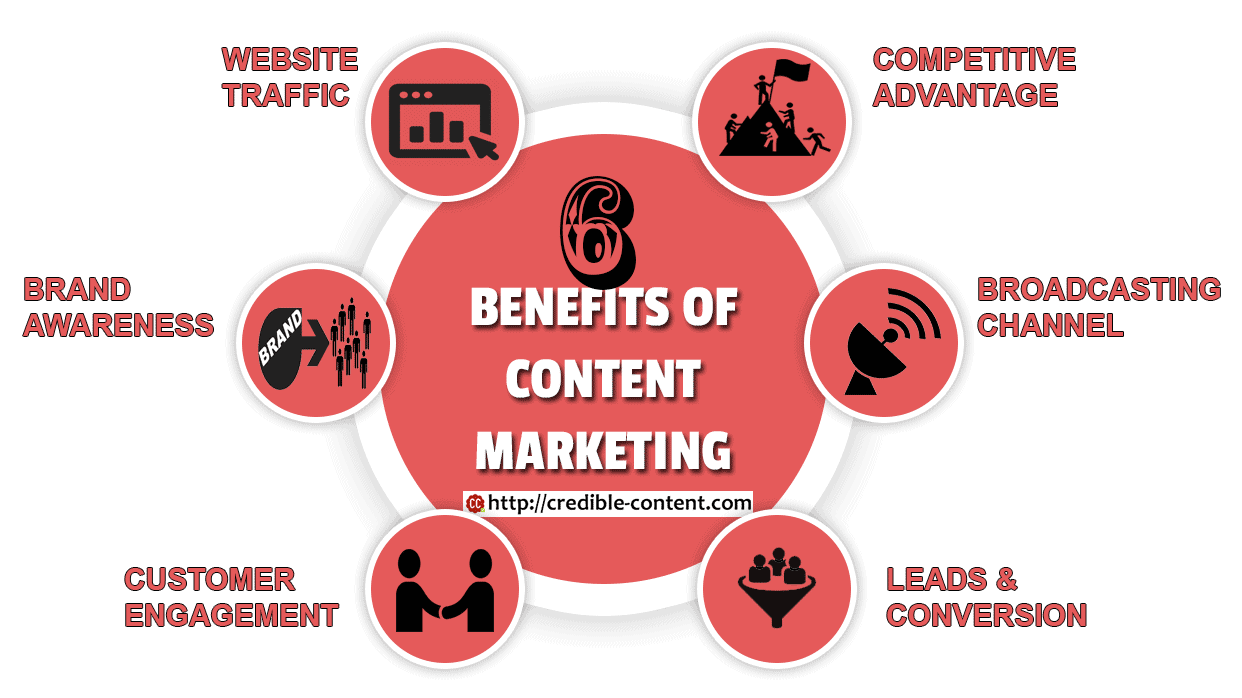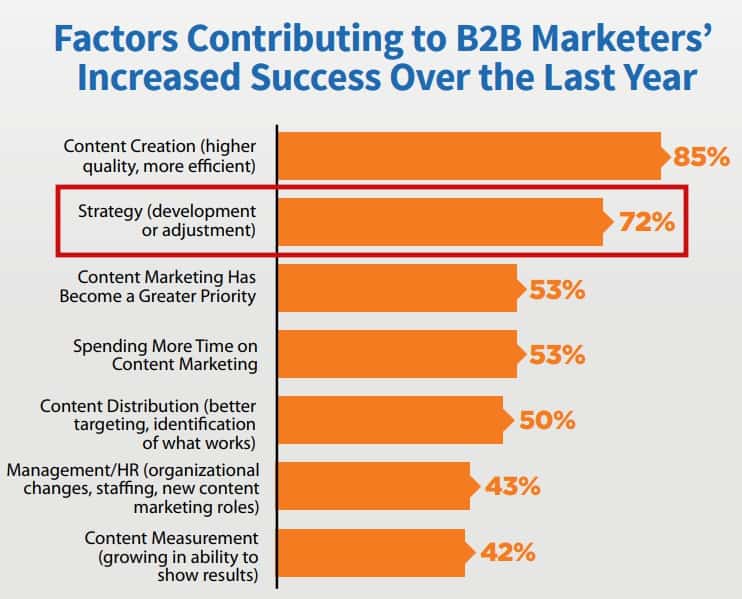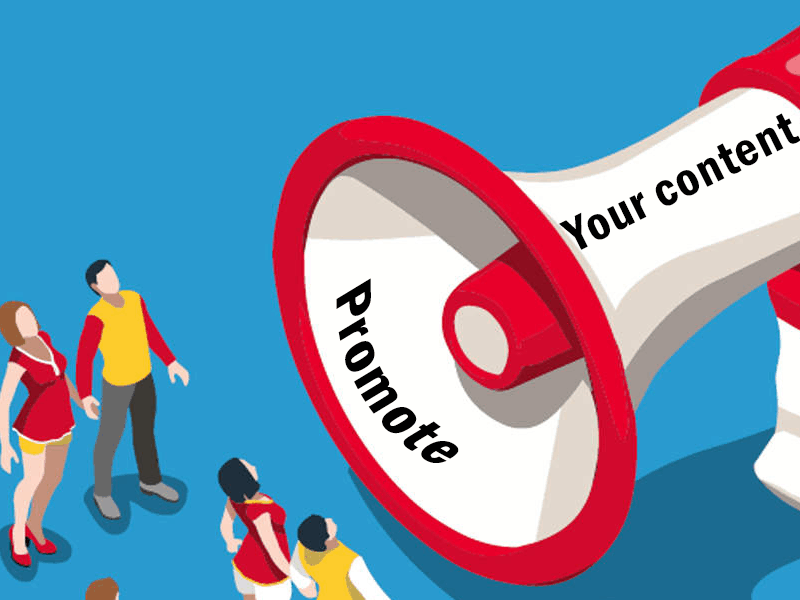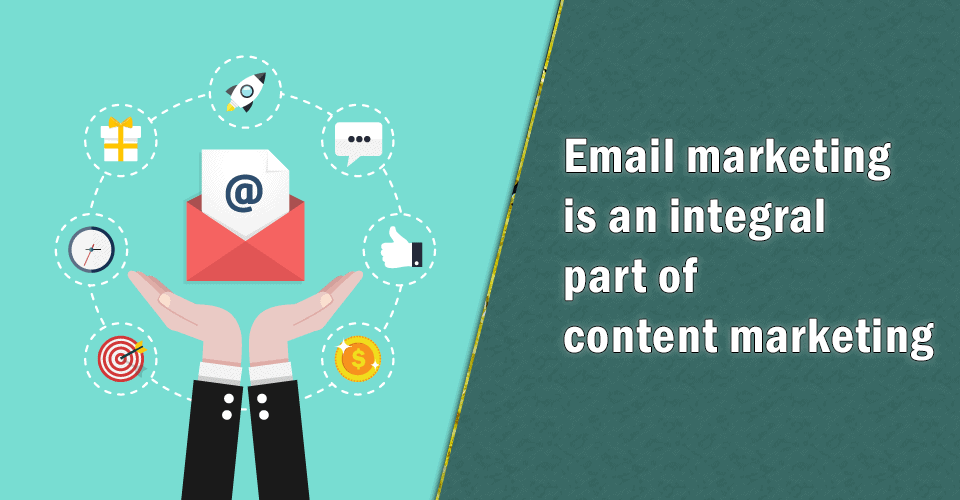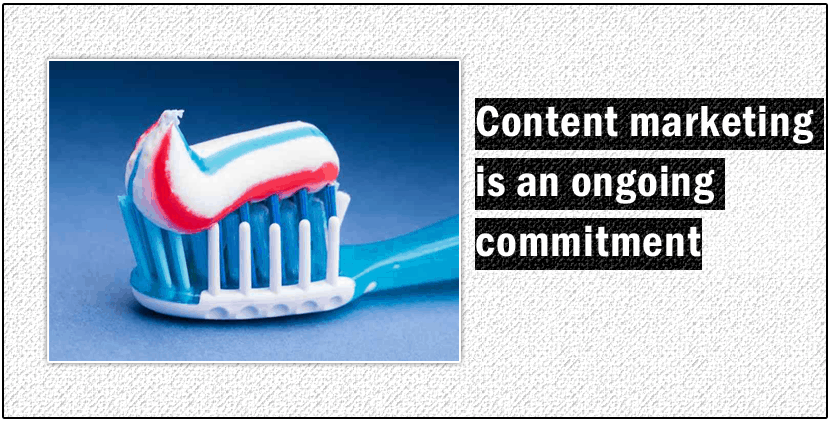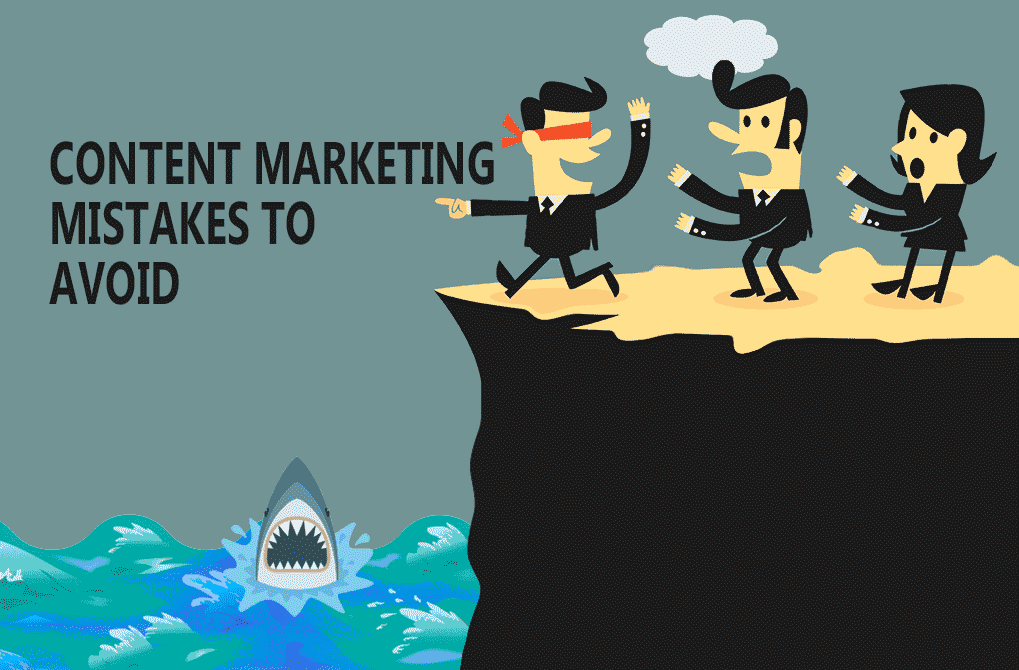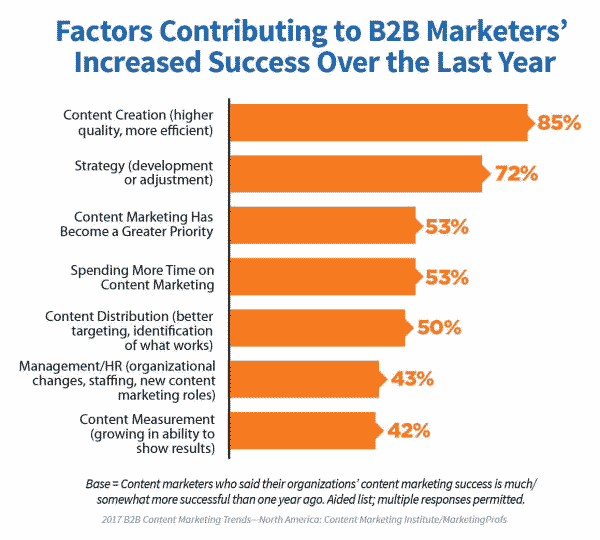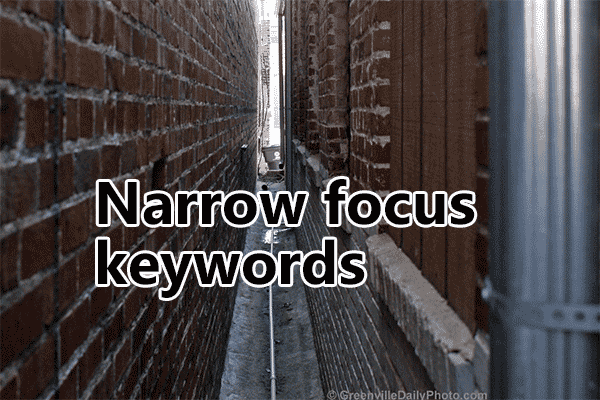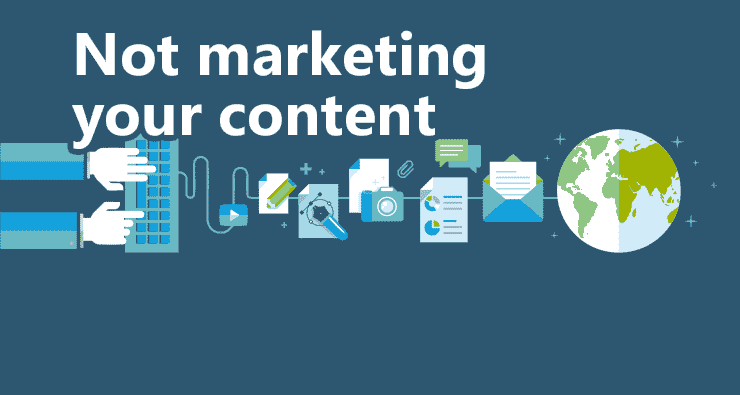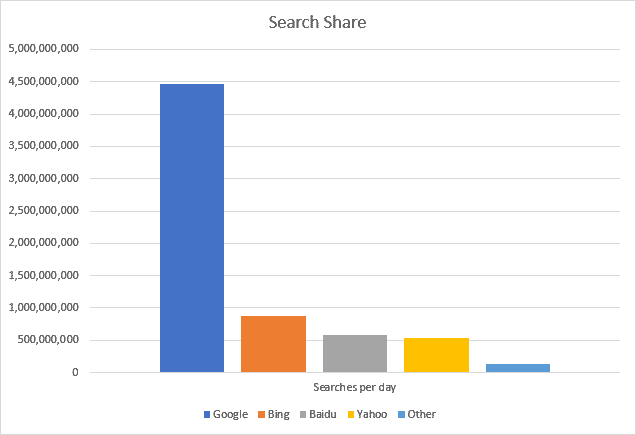Content marketing allows you to promote your business without aggressively promoting it.
You offer useful, entertaining, or engaging information to your audience in the form of blog posts, web pages, videos and social media posts.
Through your content you become a day-to-day part of their lives.
They begin to associate you with positivity and value.
Finally, when it comes to doing business, they choose you over your competitors who is not regularly engaging them.
In content marketing, instead of constantly pitching your products and services, you publish relevant and useful content that helps people solve their problems, or in some manner, makes them happy and feel good about themselves.
Why is content marketing called “marketing” when all you seem to be doing is publishing useful content?
Just like any other marketing campaign, content marketing requires strategy.
You need to promote your content using free and paid channels.
You need to aggressively put your content in front of your target audience.
You need to analyze the performance of individual pieces of content.
Based on their performance, you either revise your existing content, or make changes to your future pieces of content.
How is content marketing different from conventional marketing?
Many businesses use conventional marketing, and it works for them.
Unlike many content marketers, I don’t downplay the importance of conventional marketing.
As long as there are conventional channels like TV and print media, conventional marketing is going to exist.
A big problem with conventional marketing is that it is one way.
You are constantly telling your target customers and clients to buy your product without establishing a lasting relationship with them.
Content marketing doesn’t focus on direct selling – although in some cases businesses do aggressively promote their products and services.
Content marketing goes through different customer journey stages, such as
Awareness stage in content marketing
This is one of the first stages of the customer journey when the customer becomes aware of your existence.
Content at the awareness stage must be educational and helpful.
Selling comes at a later stage.
At the awareness stage you can publish blog posts, videos, e-books and newsletters.
Here are some examples:
- An amusing video by a restaurant on how to choose the right dress for a dinner outing.
- A blog post on what all to pack on a bike trip by a biking tour company.
- An e-book by kitchen chimney installation company advising people how to buy the best kitchen chimney and how to take care of it (I recently revised an e-book on the same topic).
During the awareness stage people become aware of the existence of your business and off your expertise and knowledge.
They are repeatedly exposed to useful information in the form of social media updates, videos and blog posts from you.
For example, there are many people who don’t even know that they need kitchen chimneys.
The book helps them become aware of the need.
It not only helps them become aware, it also helps them to choose the right kitchen chimney for different kitchens and after that, how to maintain them so that they can use the piece for a long time.
Through the awareness-related content marketing material, your prospective customers and clients not only become proactively aware of the benefits of using your product or service, they also have a choice when finally they are ready.
Consideration stage in content marketing
In this stage your prospective customers and clients are ready to buy your product or service.
You just need to provide them more information.
This information can be a mix of awareness and technical specifications about your product or service.
Some examples would be:
- You explain your content writing and copywriting process through a detailed blog post or web page, or an infographic.
- A case study describing how your SEO copywriting services helped a company improve its search engine rankings in just 6 months.
- A legal consulting service publishing testimonials from its clients where they describe how the consulting service helped them solve complicated legal problems and saved them a ton of money.
Closing stage in content marketing
The closing stage is quite critical.
Do you know that the average shopping cart abandonment rate is almost 69.57% (source)?
You put so much hard work and money into bringing people to your e-commerce website, and when you see almost 69 people out of 100 abandoning the shopping cart, it can be quite heartbreaking and crushing.
People may decide to not to do business with you just in the nick of time.
Your content marketing effort in this stage can help you remain with your prospective customers and clients till the last step – making the payment.
People abandon the last step due to many reasons including:
- Getting distracted
- Developing doubts at the last moment
- Getting confused
- Not being able to follow exactly how to do business with you
- Postponing so that they can spend some more time taking the right decision (right decision according to them)
You can use the following content marketing material to remain with your prospective customers and clients during the closing stage:
- As an architecture firm, you can produce a quality video showcasing a portfolio of work you have done so far.
- As a virtual reality company, you can show a high-profile virtual reality environment people can roam around.
- A research report by your consulting company explaining people how your strategic approach has helped many businesses grow in leaps and bounds.
Although content marketing has arrived late in the game (compared to other forms of marketing) there are many companies like Coca-Cola who have completely eliminated their conventional marketing budgets and are now focusing entirely on content marketing.
Content marketing is effective compared to traditional marketing, but some mistakes can be costly in terms of money and time.
In case you are committing these 5 content marketing mistakes, I hope after reading this blog post you will be able to take corrective measures and enjoy the full benefit of content marketing.
Here they are
Not being regular with content publishing
This is the first mistake I have observed my content writing and copywriting clients committing when they implement their content marketing strategy.
They think that publishing 5 blog posts that they can then display in the footer is enough.
Content marketing is an ongoing process because you need to remain in front of your target audience.
There are multiple reasons for that.
There is too much information on the Internet.
If you are not consistent with your content marketing (in the form of consistently publishing content) your competitors definitely are.
You see, content marketing is not the magical wand.
You can’t publish a few blog posts and case studies whenever you have budget or inclination and then expect content marketing to work for you.
Even highly successful businesses who choose to depend on content marketing, publish high-quality blog posts, podcasts, and infographics on regular basis.
You need to remain in front of your audience constantly.
Even if you are absent for a few days, they lose track.
You must have seen advertisements from famous brands on TV.
Why do they need to promote themselves when their brands are already well-known?
Because the competition is constantly round the corner.
People’s memories are short.
They easily get swayed.
Someone can always out-inform you.
When you are implementing your content marketing strategy, consider the expense of publishing and promoting content as an essential business expense.
Not focusing on the target audience for content marketing
If you’re not focusing on the target audience, you are not going to generate target response.
Whom are you planning to attract to your business?
Of course, your customers and clients – a simple answer would be.
But what happens with your content might be completely different than what you want it to do.
This is especially true if you want to attract search engine traffic to your content.
Remember that how well your content is received doesn’t depend on your desire – it depends on how useful your audience finds your content.
Therefore, choose your topics carefully.
All your topics might be able to deliver value to your readers, viewers, and prospective customers and clients.
By mistake, sometimes you may also end up targeting people who are just looking for free content and they will never turn paying customers and clients.
For this, you need to publish content for all stages of customer journey, as mentioned above.
These days I’m publishing content that attracts traffic from people who are looking for
- Useful information to spruce up their content strategy.
- Useful blog posts to link to (consequently, improving my SEO).
- A blog where they can pitch their own guest posts.
- Businesses looking for platforms to publish sponsored content.
What about work-related content?
I have already published enough content that tells people how I can help them with their content writing and content strategy.
Through this blog, I’m also helping my main website content improve its search engine rankings.
Not promoting the content you are publishing
There is a reason it is called content marketing.
You don’t just publish content, you also need to market it to make sure it reaches the right audience.
Where is your audience?
Your audience may be on Google.
Your audience may be on social media websites like LinkedIn and Twitter.
Your audience may prefer receiving email updates.
But it isn’t as simple as it is often made out to be by digital marketing experts.
Even if you want to use these platforms to promote your content, you first need to build an audience on these platform by constantly engaging people over there.
The same holds true for Google.
You need to improve your search engine rankings and help your content appear in search results before people can find you for relevant content queries.
For creating a presence on various platforms, you need a consistent effort.
Simply posting your links on LinkedIn, for example, doesn’t help you much, if not many people click the link.
If you don’t have a mailing list, how can you publish your email updates?
Hence, you need to follow a multipronged approach.
That is, not just, regularly, publish high-quality content, but also build different platforms where you can promote your content.
I know, it seems overwhelming, but most of the businesses who want to leverage content marketing, follow this multipronged approach.
Not repurposing existing content
There is massive potential in content repurposing.
You may like to read: Should you delete or re-purpose your existing content?
What does content repurposing mean?
It means either creating multiple blog posts from a single blog post that you have already published, or creating social media feeds, videos, content mashups and infographics from already published content.
I regularly go through my existing blog posts to get new blog post ideas.
Sometimes, from a single heading or subheading, I can create a completely new blog post.
You can also extract sentences and paragraphs from your existing posts and publish them as updates on social media websites like Twitter and LinkedIn.
You can create small email marketing campaigns by taking content from your existing posts and web pages.
If you have published videos, you can create small clippings that can be viewed on their own and then publish them on social networking websites.
Benefits of content repurposing include
- Saving time and money because you already have the content you need.
- Getting diversified audience for the same piece of content.
- Making your content available to people who prefer to receive it in another format.
- Getting more exposure to less successful content.
- Reaching your audience.
- Expanding your reach to a diversified audience.
- Improving your discoverability by making it easier for people to find your content.
Having a short-term content marketing goal
Content marketing pays big time, but it takes time.
It is not something that will suddenly improve your search engine rankings in 2-3 months or build you a loyal audience in a few months.
People who benefit from content marketing have been using it for years.
It is a rewarding, but a slow process.
Even for small traces of success, give it around six months to one year.
One of the biggest reasons why content marketing fails is that people have very short-term goals for it.
Content marketing has to work against many odds before it can give you some results.
You need to create your own presence.
You need to develop channels so that you can promote your content.
You need to be regularly in front of people you want to influence.
Search engine rankings in themselves take a lot of time because search engine crawlers are crawling and indexing millions of pieces of content practically every hour.
You need to have faith – only if you have faith, you can spend an appropriate amount of time.

